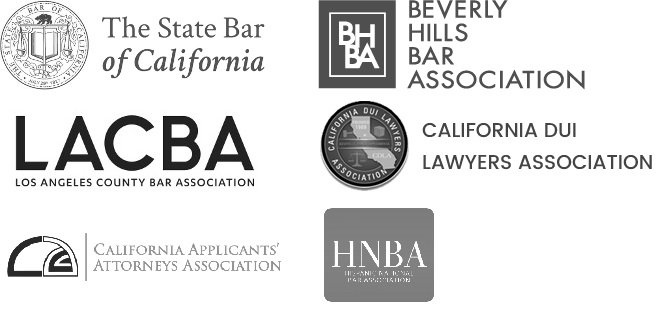Third Party Claims
Learn About Third Party Work Injury Claims in California
Injured at work? Claim denied or delayed?
When someone gets hurt at work in California, they usually think workers’ compensation is their only option. However, if another party besides the employer caused the injury, workers may have additional legal rights. Third-party claims allow injured workers to pursue full compensation from the responsible party, including damages for pain and suffering that workers’ compensation doesn’t cover.
These claims work alongside workers’ compensation benefits, not instead of them. A construction worker injured by a defective machine, for example, might file a third-party claim against the equipment manufacturer while still receiving workers’ comp benefits from their employer.
Understanding when these claims apply and how to file them can make a significant difference in the total compensation a worker receives. The process involves specific eligibility requirements, filing procedures, and coordination with existing workers’ compensation benefits that workers should know about.
If you were injured at work due to a third party, you may be eligible for compensation. Contact LG Law Center today for a free case review!
Understanding Third-Party Claims in California
Third-party claims allow injured workers to sue someone other than their employer for workplace injuries. These claims can provide more money than workers’ compensation alone and work alongside regular workers’ comp benefits.
Defining Third-Party Claims
A third-party claim is a lawsuit against someone other than the employer who caused a workplace injury. The injured worker files this claim in civil court while keeping their workers’ compensation case active.
Third parties are people or companies that don’t work directly for the employer. They might include contractors, delivery drivers, or equipment makers. These parties must have done something wrong that led to the injury.
Key requirements for third-party claims:
- The third party caused or contributed to the injury
- The third party is not the worker’s employer
- The injury happened during work or work-related activities
The worker can get money for pain and suffering through third-party claims. Workers’ compensation does not pay for pain and suffering. This makes third-party claims valuable for seriously injured workers.
How They Differ From Workers’ Compensation Claims
Workers’ compensation is a no-fault system. This means workers get benefits even if the injury was their fault. They don’t need to prove anyone did anything wrong.
Third-party claims work differently. The injured worker must prove the third party was negligent. They need to show that the third party failed to act safely or properly.
Main differences include:
| Workers’ Compensation | Third Party Claims |
| No-fault coverage | Must prove negligence |
| Limited damages | Full compensation possible |
| Quick process | Longer court process |
| No pain and suffering | Includes pain and suffering |
Workers’ compensation provides medical care and partial wage replacement quickly. Third-party claims can take months or years to resolve. However, third-party claims may result in much higher payments.
The worker may need to pay back some workers’ compensation benefits from any third-party settlement. This is called reimbursement or a lien.
Common Third-Party Scenarios
Construction sites create many third-party claim opportunities. Subcontractors often work alongside regular employees. If a subcontractor’s poor work causes an injury, the worker can sue that subcontractor.
Common third-party situations:
- Equipment failures: Defective machinery or tools that cause injuries
- Vehicle accidents: Delivery trucks or other drivers hitting workers
- Contractor negligence: Outside contractors creating unsafe conditions
- Property owner liability: Unsafe conditions at job sites owned by others
Delivery drivers frequently cause third-party claims. When a delivery truck hits a worker in a parking lot, the worker can sue the driver and the trucking company. The worker still gets workers’ compensation from their own employer.
Product defects also create third-party claims. If a ladder breaks and injures a worker, they might sue the ladder manufacturer. The defective product caused the injury, not the employer’s actions.
Property owners can be third parties, too. If a worker gets hurt because of a dangerous condition at a client’s building, they might sue the property owner. This happens often with maintenance workers and contractors.
Eligibility for Third-Party Claims
Workers in California can file third-party claims when someone other than their employer causes their work-related injury. The injured worker must prove the third party was at fault and identify specific situations that qualify for additional compensation.
Who Can File a Third-Party Claim
Any employee who gets hurt at work because of another person or company can file a third-party claim. This includes workers who already filed for workers’ compensation benefits.
The injured worker does not have to choose between workers’ comp and a third-party claim. They can pursue both types of compensation at the same time.
Eligible workers include:
- Full-time employees
- Part-time employees
- Temporary workers
- Contract workers (in some cases)
The worker must have suffered an injury or illness that happened during work hours or work activities. The injury must be connected to their job duties or workplace.
Family members may also file third-party claims if a worker dies from injuries caused by someone other than the employer.
Determining Fault or Responsibility
The injured worker must prove that a third party caused or contributed to their injury. This means showing the other person or company was careless or broke safety rules.
Common ways to prove fault:
- Getting witness statements
- Taking photos of the accident scene
- Collecting safety reports
- Reviewing video footage
- Getting expert opinions
The third party must be someone different from the employer or coworkers. California law protects employers and fellow employees from most personal injury lawsuits through the workers’ compensation system.
Multiple parties can share responsibility for an accident. Even if the worker was partly at fault, they may still recover some money from the third party.
Situations That Qualify
Several common workplace situations allow workers to file third-party claims against people or companies outside their employer.
Motor vehicle accidents are the most common third-party cases. When another driver hits a worker who is driving for work, the worker can sue the at-fault driver.
Defective equipment or products can create third-party claims against manufacturers. If a broken machine or faulty tool causes injury, the worker may sue the company that made it.
Property owner negligence applies when workers get hurt on someone else’s property. Construction workers often file claims against property owners who fail to maintain safe conditions.
Subcontractor accidents happen when workers from different companies work at the same job site. A worker injured by another company’s employee or equipment may have a third-party claim.
The Process of Filing a Third-Party Claim
Filing a third-party claim requires identifying responsible parties outside the employer, gathering strong evidence, and meeting strict court deadlines. Workers must navigate both civil court procedures and workers’ compensation requirements simultaneously.
Beginning the Claim
The first step involves identifying who caused the workplace injury besides the employer. Common third parties include equipment manufacturers, subcontractors, property owners, or delivery drivers.
Workers should contact a personal injury attorney who handles third-party claims. At LG Law Center, clients learn that these cases differ from standard workers’ compensation claims.
The attorney will evaluate whether a valid third party exists. They review the accident details and determine if negligence occurred. This evaluation helps decide if pursuing a third-party claim makes financial sense.
Key requirements for starting the claim:
- The third party must be someone other than the employer or coworker
- Evidence of negligence must exist
- The injury must have occurred during work duties
- A clear connection between the third party’s actions and the injury
Workers can file both workers’ compensation and third-party claims at the same time. The workers’ comp claim provides immediate medical care and wage replacement. The third-party claim seeks additional damages like pain and suffering.
Collecting Evidence
Strong evidence forms the foundation of successful third-party claims. Workers should gather documentation immediately after the injury occurs.
Essential evidence includes:
- Medical records showing injury details and treatment
- Accident reports from the workplace
- Witness statements from people who saw the incident
- Photos of the accident scene and equipment involved
- Safety violations or code violations by the third party
Workers should take pictures of their injuries and the accident location. They need to get contact information from witnesses before they leave the scene.
Equipment defects require special documentation. Workers should preserve the faulty equipment and get maintenance records. Product manuals and safety warnings also help prove manufacturer liability.
Expert witnesses often strengthen third-party cases. Engineers can testify about equipment failures. Safety experts can explain how violations caused the accident.
Deadlines and Statute of Limitations
California law sets strict time limits for filing third-party claims. Workers have two years from the injury date to file their lawsuit in civil court.
Missing this deadline means losing the right to pursue compensation. The court will dismiss cases filed after the statute of limitations expires.
Some exceptions can extend the deadline. If the injury was discovered later, the two-year period might start from the discovery date. Hidden injuries like exposure to toxic chemicals may qualify for extended deadlines.
Important timing considerations:
- File workers’ compensation claim immediately
- Begin third-party claim investigation within weeks
- Complete court filing before the two-year deadline
- Account for holidays and weekends when calculating deadlines
Workers should start the process early even if their injuries are still healing. Attorneys can file the initial paperwork and continue building the case during recovery.
The workers’ compensation lien must be addressed during settlement. The insurance company may claim repayment from third-party recoveries.
Potential Compensation and Benefits
Third-party claims can provide significantly more money than workers’ compensation alone. These claims allow injured workers to recover damages that workers’ comp does not cover, including pain and suffering and full lost wages.
Types of Damages Available
Third-party claims offer several types of compensation that workers’ compensation cannot provide. Pain and suffering damages pay for physical pain and emotional distress caused by the injury.
Lost wages can be recovered at full value, not just the partial amount workers’ comp pays. This includes future earnings the person will lose due to their injury.
Medical expenses are covered completely, including future medical care needs. Third-party claims can also pay for medical treatments that workers’ comp might deny.
Property damage compensation covers personal items damaged in the accident. This might include clothing, tools, or personal belongings.
Punitive damages may be available in cases where the third party acted very badly. These damages punish the wrongdoer and prevent similar behavior.
How Compensation Differs From Workers’ Compensation
Workers’ compensation limits what injured workers can receive. It typically pays only 66% of lost wages up to a state maximum.
Third-party claims have no such limits. They can provide 100% of lost wages, both past and future. The person can also receive money for pain and suffering, which workers’ comp never pays.
| Workers’ Compensation | Third-Party Claims |
| 66% of wages (capped) | 100% of wages |
| No pain and suffering | Pain and suffering included |
| Limited medical coverage | Full medical coverage |
| No punitive damages | Potential punitive damages |
Workers’ comp pays benefits quickly without proving fault. Third-party claims take longer but often result in much higher compensation amounts.
Recovery Beyond Medical Costs
Third-party claims help injured workers get back more than just medical bills. They can recover money for how the injury changed their life.
Disability compensation pays for permanent limitations the injury causes. This includes both partial and total disability payments based on earning capacity.
Loss of consortium damages compensate a spouse for how the injury affected their relationship. This covers companionship and support losses.
Rehabilitation costs include job retraining if the person cannot return to their old work. Physical therapy and occupational therapy expenses are also covered.
The worker’s family may also receive compensation if they provided care during recovery. These damages recognize the full impact the injury had on everyone involved.
Impact on Your Workers’ Compensation Benefits
Filing a third-party claim does not cancel your workers’ compensation case. However, California law requires coordination between both claims to prevent double recovery for the same damages.
What Happens to Your Workers’ Compensation Case
Your workers’ compensation case continues as normal when you file a third-party claim. You can still receive medical treatment and wage benefits through workers’ comp.
The two cases run on separate timelines. Workers’ comp provides immediate benefits regardless of who caused the accident. The third-party case may take months or years to resolve.
California law allows injured workers to pursue both types of compensation at the same time. This gives workers the best chance to recover full damages for their injuries.
Your employer’s insurance company cannot reduce your benefits just because you filed a third-party claim. They must continue paying according to workers’ compensation law.
Liens and Reimbursement to the Insurance Carrier
The workers’ compensation insurance company has a legal right to recover money they paid on your case. This is called a lien.
If you win money from the third party, you may need to pay back some workers’ comp benefits. The amount depends on how much you recover and what damages the money covers.
Medical expenses paid by workers’ comp usually must be repaid first. Wage benefits may also need to be repaid depending on your settlement.
An attorney can help negotiate the lien amount. Sometimes insurance companies will accept less than the full amount they paid out.
The lien only applies to money recovered from the third party. It does not affect ongoing workers’ compensation benefits for future medical care or permanent disability.
Injured At Work Due To A Third-Party? Contact LG Law Center Today!
Getting hurt at work because of someone else’s actions can be confusing. Workers may not know what steps to take next.
LG Law Center in Ontario, California, can help injured workers understand their options. The firm focuses on workers’ compensation cases and knows how third-party claims work.
Why Choose LG Law Center:
- Experience with California workers’ compensation law
- Understanding of third-party liability cases
Help identifying all sources of compensation - Guidance through legal deadlines and procedures
Attorney Luis E. Gonzalez and his team can review each case carefully. They look for all parties who might be responsible for workplace injuries.
Third-party claims are often complex. Workers need someone who understands both workers’ comp and personal injury law. LG Law Center handles both types of cases.
The firm helps clients navigate insurance companies and legal procedures. They work to get the maximum compensation available under California law.
What LG Law Center Can Do:
- Review the details of workplace accidents
- Identify potential third-party defendants
- Handle communication with insurance companies
- Explain workers’ rights under California law
Time limits apply to third-party claims in California. Workers should contact LG Law Center as soon as possible after their injury.
The firm offers consultations to discuss workplace injury cases. They can explain whether a third-party claim might be possible alongside workers’ compensation benefits.
Contact them today for a free case review!


Workers’ Compensation Attorney in Ontario, California
If you’ve been injured on the job in Ontario, California, you may be entitled to workers’ compensation benefits to help cover your medical care and lost wages. While the system is designed to protect workers, filing a successful claim can quickly become complicated, especially when insurance companies work hard to minimize payouts. From delayed treatments to denied benefits, many injured workers find themselves struggling to get the support they need.
LG Law Center is committed to protecting the rights of injured employees throughout Ontario and Pomona. Their experienced workers’ compensation attorneys know how to stand up to insurance companies and fight for the full benefits you deserve. Contact them today for a free consultation and let them help you take the next step toward recovery.







